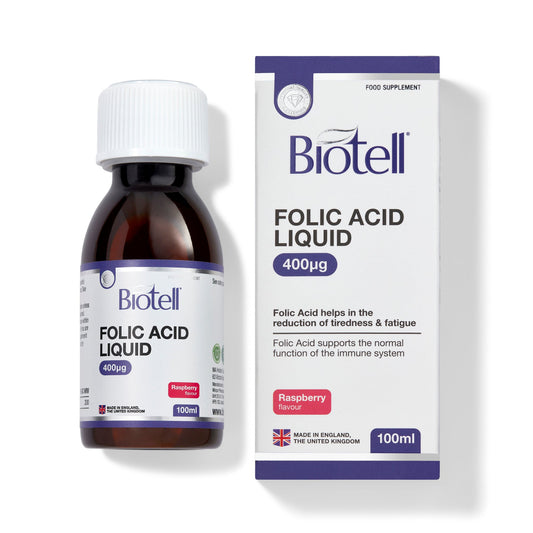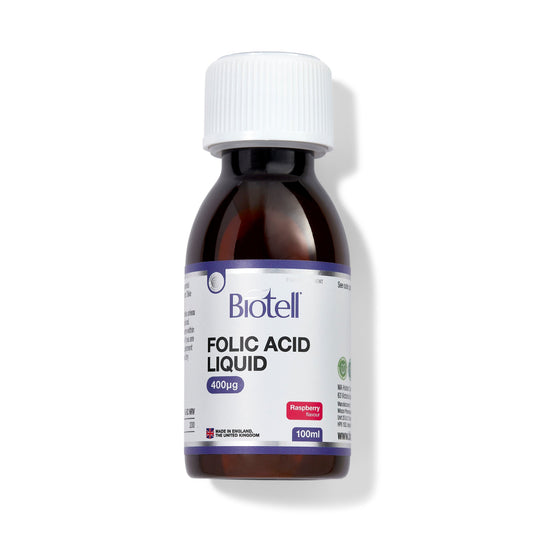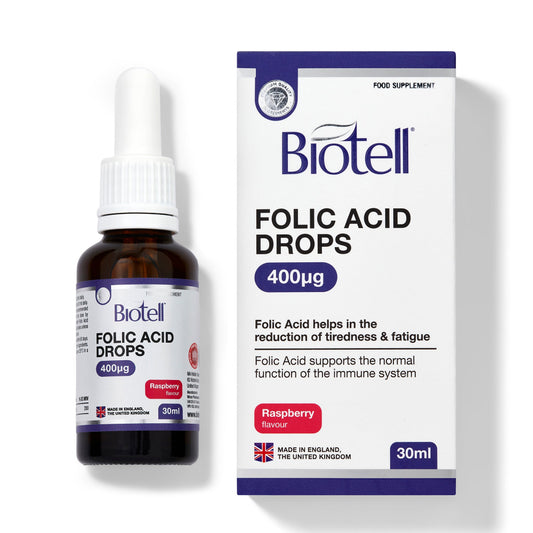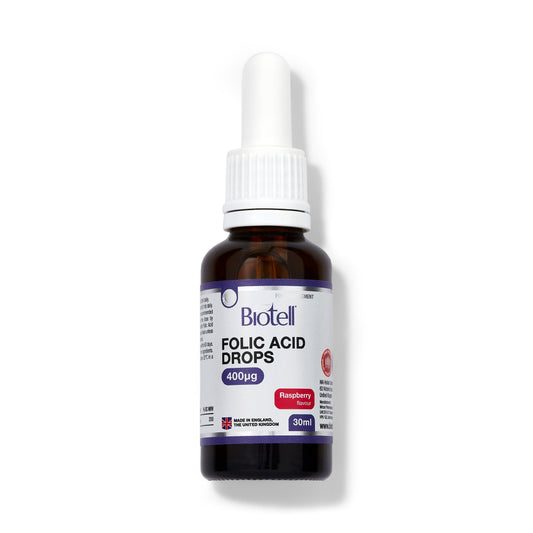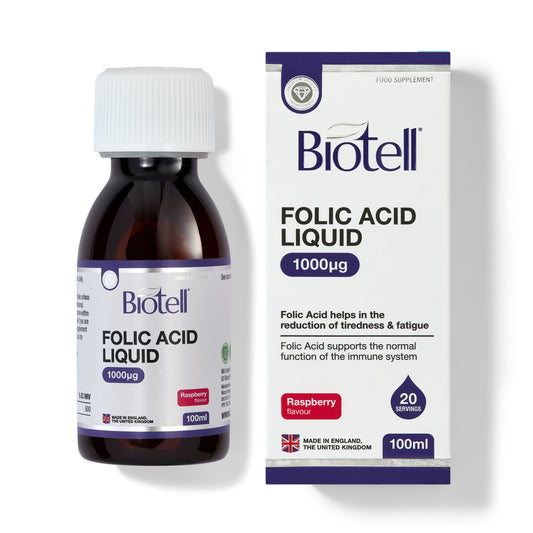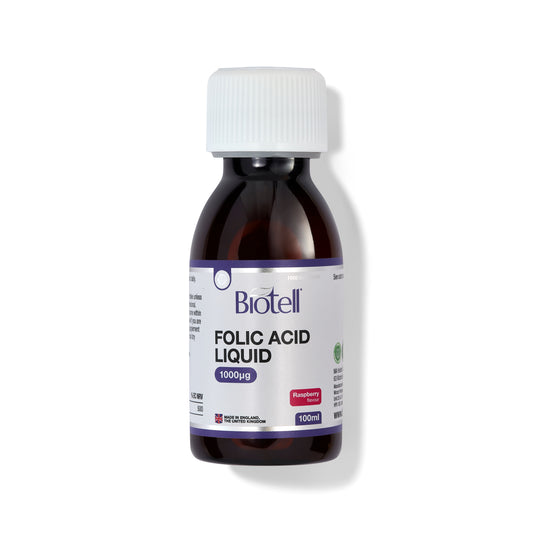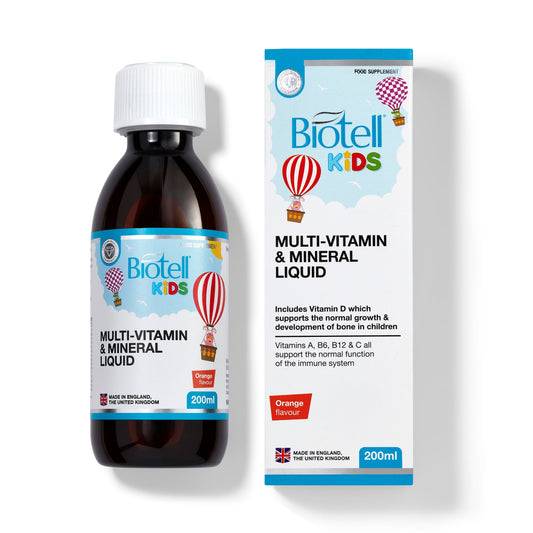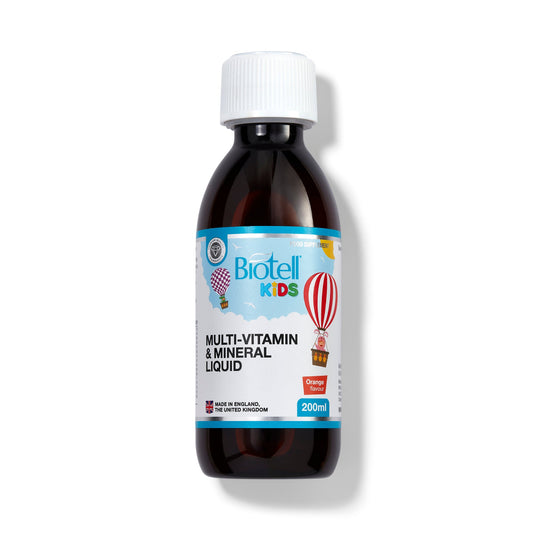What is Folic Acid (Vitamin B9)?
Folic Acid vs. Folate – What’s the Difference?
Folate is the natural form of vitamin B9 found in foods such as spinach, kale, broccoli, beans, peanuts, citrus fruits, eggs, and liver. Folic acid is the synthetic form used in supplements and fortified foods (for example, certain cereals, breads, and flours). Although they’re related, folic acid and folate are different forms with slightly different handling by the body.
Folic acid is generally better absorbed than folate from food (commonly cited around 85% vs. 50%), which makes supplementation a practical way to ensure reliable intake—especially when needs are higher.
Natural Food Sources of Folate
- Dark leafy greens (spinach, kale, broccoli)
- Legumes (beans, lentils, peanuts)
- Citrus fruits and juices
- Avocado
- Eggs
- Liver
Why Folic Acid is Often Preferred
Folate in food is sensitive to heat and water, and absorption varies. Folic acid in fortified foods and supplements offers a stable, precisely dosed, and well‑absorbed option for everyday use.
Key Benefits of Folic Acid
Red Blood Cell Formation & Anemia Prevention
Folic acid helps your body make healthy new red blood cells. Inadequate intake can lead to folate‑deficiency anemia, with symptoms such as fatigue, weakness, pale skin, headaches, and a sore tongue.
Supporting Pregnancy and Fetal Development
Adequate folic acid before and during early pregnancy helps prevent neural tube defects (like spina bifida). Because many pregnancies are unplanned, health authorities recommend that women of childbearing age consume 400–800 mcg daily.
Heart & Brain Health
Folic acid helps lower homocysteine, an amino acid linked with cardiovascular risk when elevated. Some evidence suggests it may also support memory and mood in older adults.
Other Potential Benefits
- Supports oral/gum health in certain situations
- Helps reduce specific medication side effects (e.g., methotrexate)
- Contributes to healthy skin and cell repair
- Plays a role in energy metabolism
Who Should Take Folic Acid?
Women Before & During Pregnancy
All women who could become pregnant are commonly advised to take 400–800 mcg daily. Early pregnancy is when folic acid is most critical for fetal neural tube development.
People with Folate Deficiency or Anemia
Supplementation is effective at treating folate deficiency and folate‑deficiency anemia. Your healthcare provider can diagnose and guide dosing.
Those Taking Certain Medications
Some medications (for example, methotrexate or select antiepileptics like phenytoin) can affect folate levels or handling. Your clinician may recommend folic acid alongside these therapies.
General Daily Support
Anyone wanting to support healthy red blood cell production, cardiovascular markers, or overall wellbeing may consider a daily folic acid supplement.
Recommended Dosage & How to Take
Daily RDA Guidelines
- Adults: 400 mcg per day
- Pregnancy: 600 mcg per day
- Breastfeeding: 500 mcg per day
- Children: varies by age (your pediatrician can advise)
Special Cases
Some individuals (for example, with a personal/family history of spina bifida, certain medical conditions, or on specific medications) may be advised higher doses under medical supervision.
Liquid vs. Drops — Which should you choose?
Liquid (bottle measure)
- Best for: families, mixing into juice/smoothies, or anyone who prefers a measured spoon/cap dose.
- Steady daily use: easy to add to a morning routine.
-
Strengths available:
- 1000 mcg per 5 ml (≈200 mcg per ml)
Drops (dropper)
- Best for: precise micro‑dosing, pill‑free convenience, travel‑friendly dosing.
- Simple counting: add drops directly under the tongue or into a drink.
-
Strengths available:
- 400 mcg per ml (1 ml delivers the standard adult RDA)
How to match strength to your goal
-
General adult daily support (400 mcg):
- Liquid 1000 mcg/5 ml → take ~2 ml (≈400 mcg)
- Drops 400 mcg/ml → take 1 ml
-
Pregnancy target (commonly 600 mcg, confirm with your clinician):
- Liquid 1000 mcg/5 ml → take ~3 ml (≈600 mcg)
- Drops 400 mcg/ml → take 1.5 ml (≈600 mcg)
- Flexible dosing: Drops make it easy to fine‑tune by 0.5–1 ml steps.
Always follow the directions on your specific product and consult your healthcare provider for personalised dosing, especially during pregnancy, breastfeeding, or when taking prescription medicines.
Side Effects & Precautions
Is Folic Acid Safe?
Folic acid is generally safe for most adults and children at recommended intakes.
Possible Side Effects at High Doses
- May mask vitamin B12 deficiency when taken in excess
- Occasional digestive upset (nausea, bloating, reduced appetite)
Medication Interactions
Folic acid can interact with certain medicines (for example, phenytoin or methotrexate). If you’re on long‑term medication, speak with your healthcare professional before using folic acid supplements.
Upper Safe Limits (UL)
Adults: typically cited at 1,000 mcg/day from supplements and fortified foods (does not include natural folate from food). Children’s limits vary by age.
Folic Acid vs. L‑Methylfolate
Folic acid is inactive until the body converts it into L‑methylfolate (5‑MTHF), the form used directly in metabolic pathways. Some people have genetic variations that may reduce this conversion efficiency. While standard folic acid works well for many, others may discuss active L‑methylfolate options with their clinician.
Summary & Expert Recommendation
Folic acid is a cornerstone nutrient for healthy blood, heart and brain support, and fetal development. Because dietary intake can be inconsistent, many people choose a reliable daily supplement.
Make folic acid simple: Choose the format that fits your routine — Liquid for easy mixing and family use, or Drops for precise, travel‑friendly dosing. Select the strength that aligns with your goal (400–600 mcg for most adults and pregnancy guidance, as advised by your clinician).
Shop Folic AcidThis article is for informational purposes only and does not substitute professional medical advice. Always consult your healthcare provider about personal needs, dosing, and interactions.

